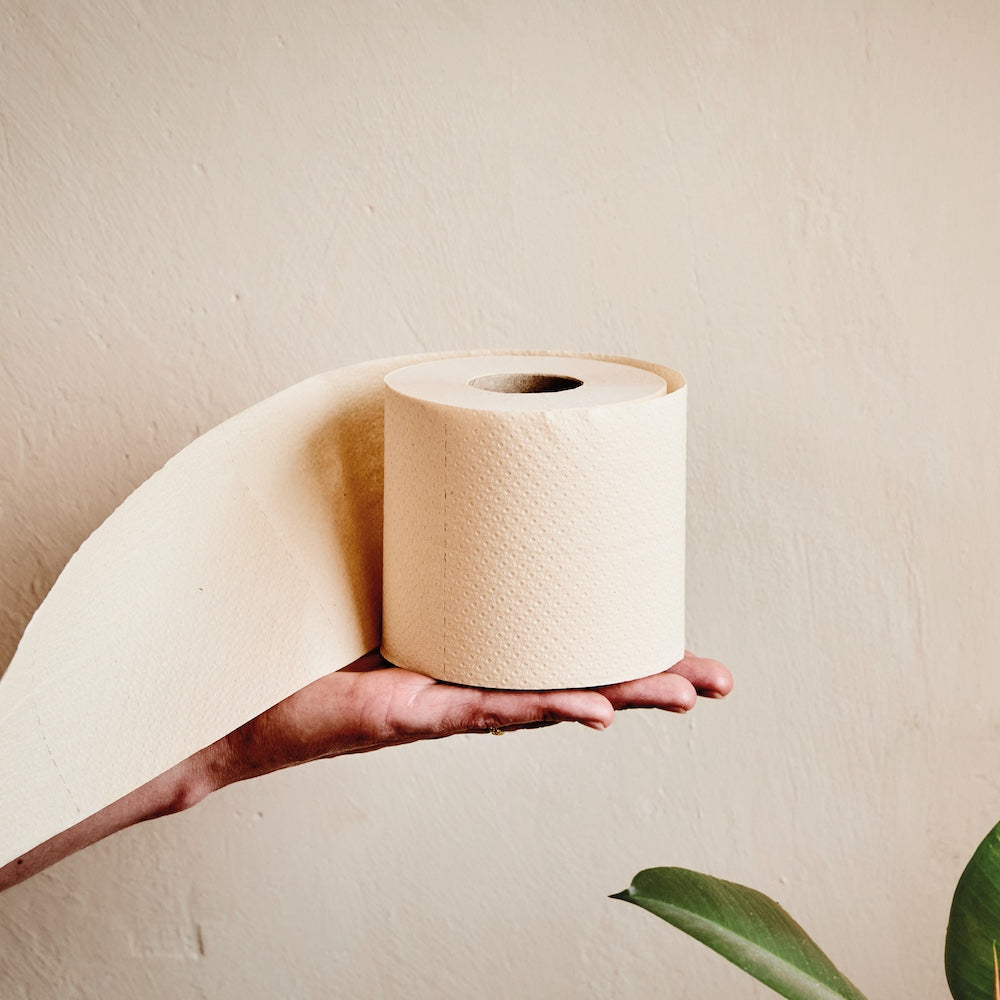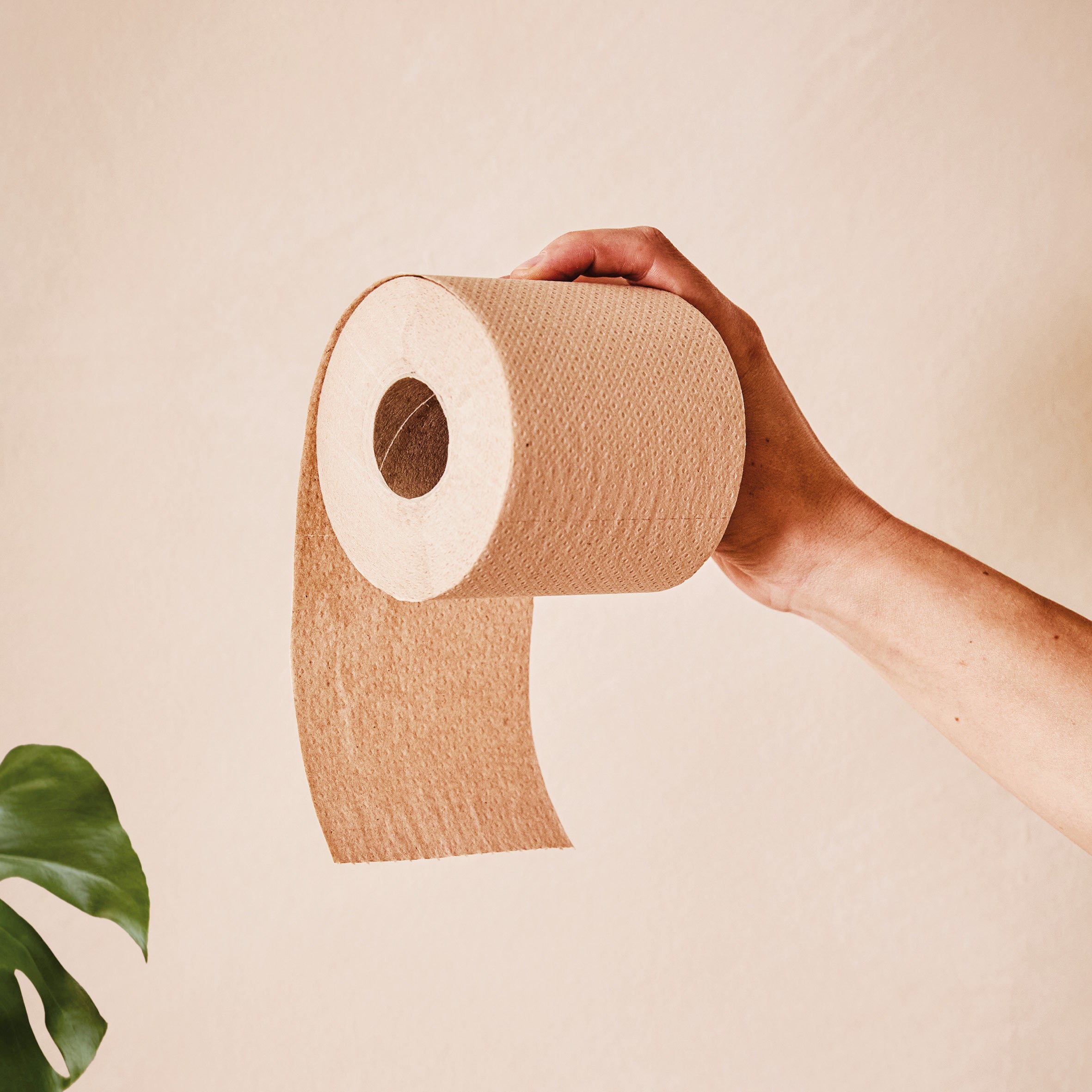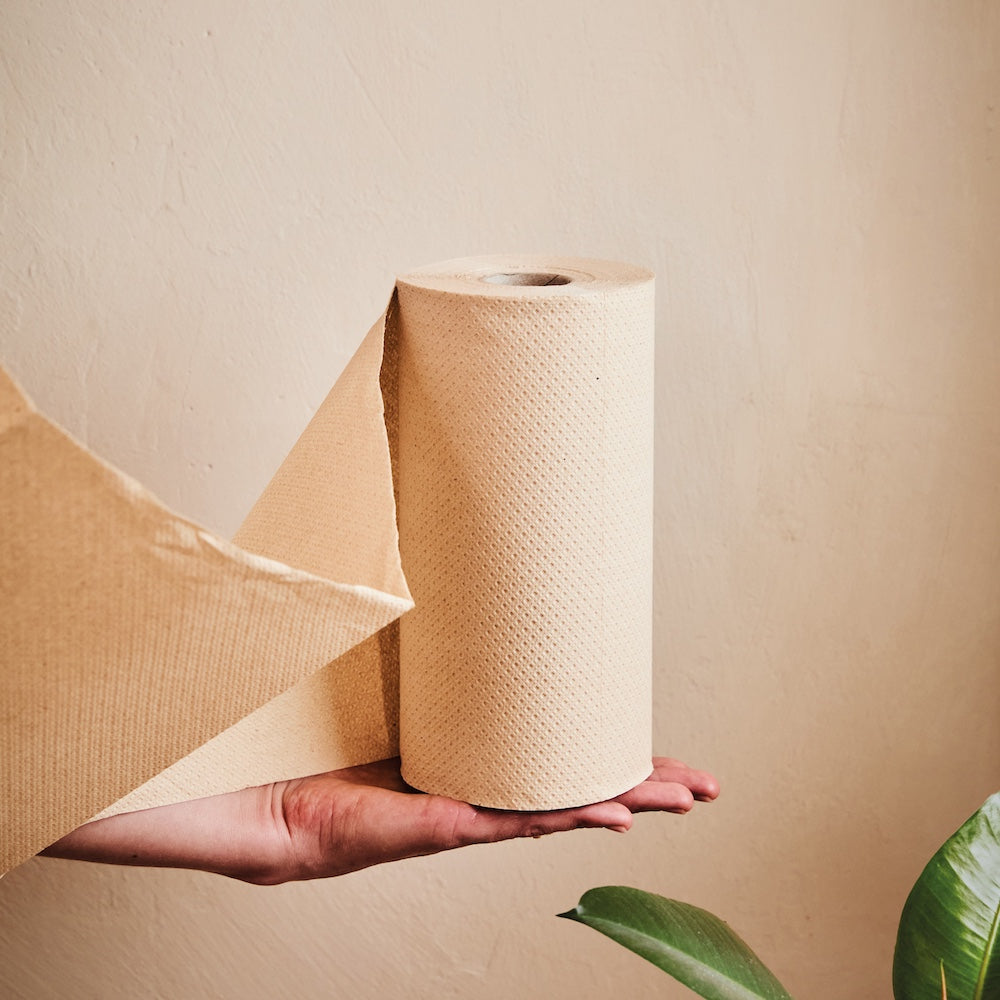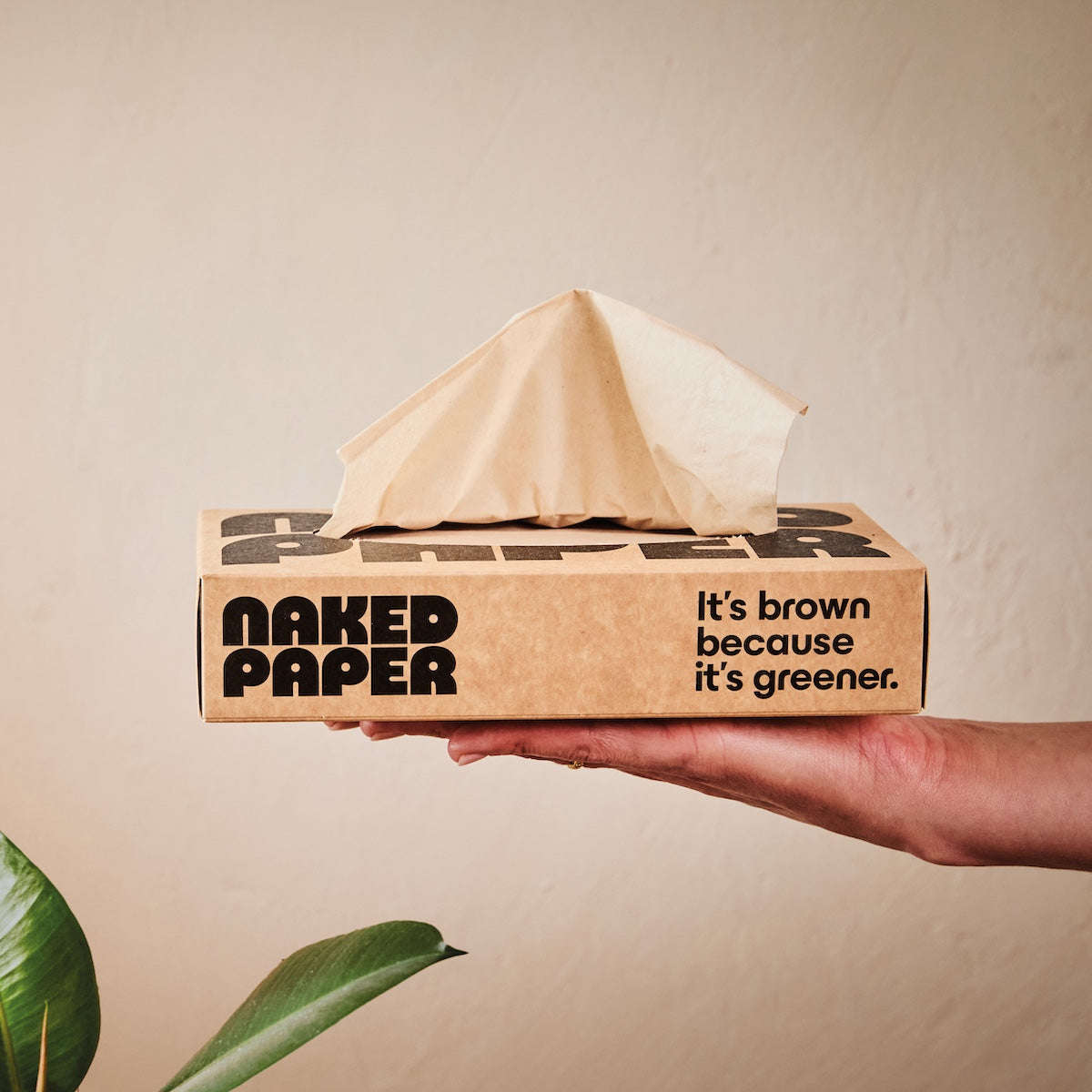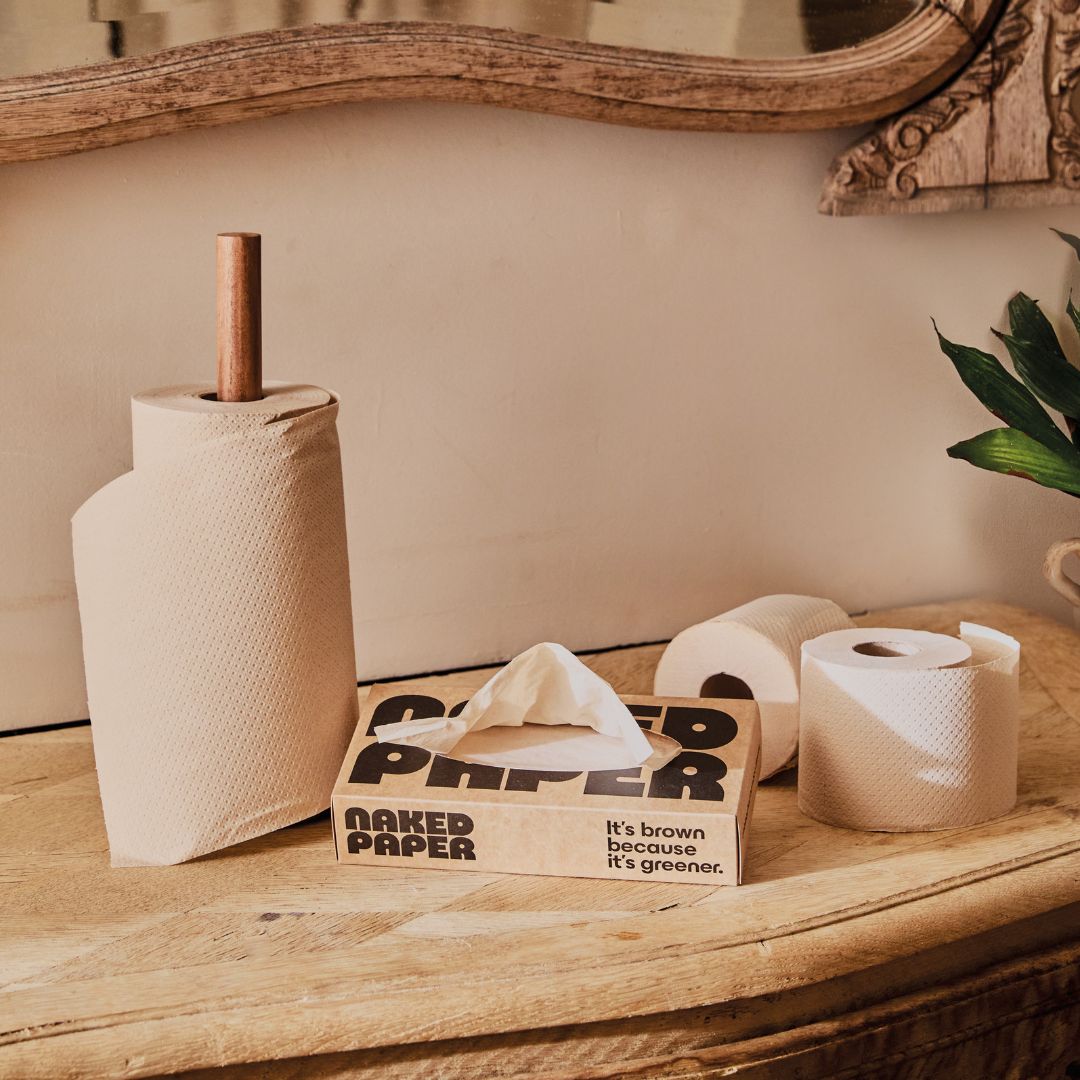Bamboo viscose vs bamboo tissue: what's the environmental difference?

Lots of us are growing more and more aware of the chemical footprint of the things we use every day. Mountains of industrial waste and the contamination of soil, air, and water are a concern for us all.
At Naked Paper we're doing everything we can to keep our toilet rolls, kitchen rolls, and facial tissues simple. Instead of wrapping our products in plastic, we use cardboard boxes. Instead of bleaching them white, we leave their unbleached natural shades as they are. And instead of chopping down trees for our raw materials we use recycled card, or bamboo.
But is using bamboo really helping? We sometimes hear from people who’ve been told that making products from bamboo actually uses a lot of harsh chemicals that can damage human health and contaminate water.
So is bamboo good for the environment, or bad? It all comes down to what you’re making.
In this article, we’ll explain why making viscose fabric or woven materials from bamboo requires polluting chemicals, why making tissue is completely different, and how to tell the difference.

Using bamboo to make fabric: the viscose process
Bamboo doesn’t grow in long, fluffy fibres like cotton or wool. Its natural fibres are short and brittle, which means they can’t easily be spun into strong threads for weaving.
So how do you turn hard bamboo stalks into thread that can be used for clothes, bed sheets, sanitary pads, or even wet wipes?
The answer is a manufacturing innovation called the viscose process. This is a chemical-intensive way of turning hard bamboo into flexible thread.
Here’s a quick breakdown of how it works:
Chipping: Bamboo is chipped and soaked in sodium hydroxide to strip away everything except cellulose.
Gellifying: The cellulose pulp is treated with carbon disulfide, which “melts” it into a thick viscous gel.
Spinning: This gel is pushed through tiny nozzles into a bath of acid, where it coagulates (congeals) into long fibres.
Thread making: These long fibres can be spun into thread which can be woven into fabric, turned into wet wipes, or used in period products like pads.
The final material is usually labelled as viscose or rayon, and it no longer resembles natural bamboo fibre. It’s been broken down and rebuilt; from stalks, to goo, to thread, to fabric, with a lot of powerful chemicals playing a part in the process.
This is where the environmental problems come in.

Why bamboo viscose can damage the environment
The viscose process produces strong, useful fabrics that are often more biodegradeable than other synthetic alternatives. But the harsh chemicals involved introduce some very serious environmental challenges.
Toxic chemicals: Carbon disulfide, used widely in the viscose process, is a known neurotoxin. The production of viscose and rayon has been linked to serious health problems for factory workers.
Water pollution: If factories don’t properly manage their wastewater, the chemicals used to turn the bamboo into gel, or the acid that congeals the gel into thread, can end up in rivers. Reports from the Changing Markets Foundation have documented “rampant pollution” around viscose plants, damaging marine life and agriculture and exposing local populations.
Some companies reduce the damage by using more a expensive “closed-loop” method that recycle chemicals so they don’t contaminate water supplies. Bamboo fabric manufactured in this way is called "lyocell," but it's still not the standard method; most bamboo fabric is still made using the viscose process.
That’s why bamboo fabrics, and woven bamboo products like wet wipes and sanitary pads, have picked up a reputation for being harmful to the planet.
But we’re happy to say that the chemical cocktail that goes into viscose production isn’t needed for all bamboo products, and the processes used to make bamboo tissue are completely different.

How bamboo tissue is made
Making tissue from bamboo, like our soft, unbleached Naked Paper, is far simpler and much closer to traditional papermaking. We’re not trying to create long, strong threads so there’s no need for chemical gellifying and acid baths.
Here’s what the process looks like at Naked Paper:
Chipping: Bamboo stalks are harvested and cut into small chips.
Pulp board bale: The chips are soaked and crushed mechanically to make a pulp, which is dried into flat boards for transport.
Boiling and cleaning: At the tissue factory, these boards are boiled and cleaned using only gentle, REACH-compliant soaps and salts. We don’t bleach the pulp, so it stays its natural colour.
Forming and drying: The clean pulp is spread into thin sheets, pressed, and dried using renewable energy. It’s wound onto huge rolls of tissue, which are cut into toilet roll, kitchen roll, or tissues.
That’s it. No toxic solvents, no strings of gel. Just bamboo fibre, mashed and boiled, and dried into big bleach-free sheets.

The difference between bamboo tissue and viscose
That’s the difference between woven products made from bamboo, and simple tissue and paper. When people say bamboo is damaging to the environment, they’re talking about viscose-based textiles and fabrics. They don’t mean the bamboo tissue in your bathroom or kitchen, and they certainly don’t mean our lovely bleach-free Naked Paper.
If you have a bamboo product that tears like paper, snaps like wood, or breaks down easily in water like tissue, it probably didn't go through the viscose process. For anything that’s been woven; like fabric, wet wipes, or the top layer of sanitary pads, there's a good chance it did.
Of course, even with tissue, there are more and less sustainable ways to manufacture. At Naked Paper we do everything in our power to keep our products as clean and sustainable as possible
(and if you’d really rather skip bamboo altogether, we also have products made from recycled card)
Want to try fuss-free bamboo tissue products?
Recent blog posts
-

Bamboo viscose vs bamboo tissue: what's the environmental difference?
Lots of us are growing more and more aware of the chemical footprint of the things we use every day. Mountains of industrial waste and the contamination of soil, air, and water are a concern for us all. At Naked...
-

Our 2024 Impact Report
We’re all about focus at Naked Paper. When it comes to making good toilet paper and growing sustainably, we try to keep our heads down and crack on. That said, it’s useful every now and again to take stock. Our annual...
-

Our footprint stage three: transport and waste management
This is the third part of our series breaking down the full, cradle-to-grave, emissions of making Naked Paper*. In part one we covered the CO2e involved in the production and transportation of our raw materials, and in part two we...
